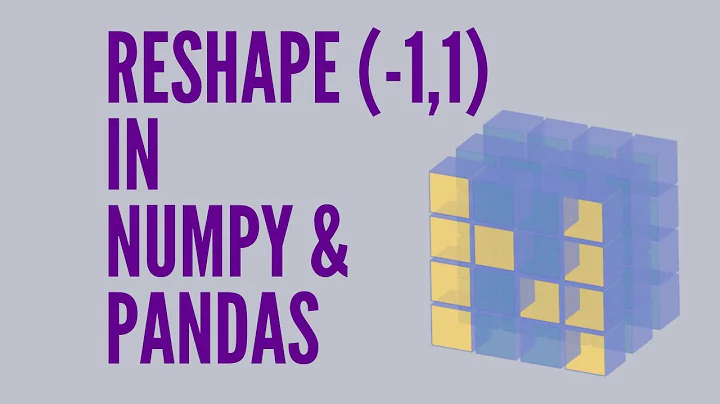numpy.shape gives inconsistent responses - why?
Solution 1
When you invoke the .shape attribute of a ndarray, you get a tuple with as many elements as dimensions of your array. The length, ie, the number of rows, is the first dimension (shape[0])
- You start with an array :
c=np.array([1,2]). That's a plain 1D array, so its shape will be a 1-element tuple, andshape[0]is the number of elements, soc.shape = (2,) - Consider
c=np.array([[1,2]]). That's a 2D array, with 1 row. The first and only row is[1,2], that gives us two columns. Therefore,c.shape=(1,2)andlen(c)=1 - Consider
c=np.array([[1,],[2,]]). Another 2D array, with 2 rows, 1 column:c.shape=(2,1)andlen(c)=2. - Consider
d=np.array([[1,],[2,]]).transpose(): this array is the same asnp.array([[1,2]]), therefore its shape is(1,2).
Another useful attribute is .size: that's the number of elements across all dimensions, and you have for an array c c.size = np.product(c.shape).
More information on the shape in the documentation.
Solution 2
len(c.shape) is the "depth" of the array.
For c, the array is just a list (a vector), the depth is 1.
For d, the array is a list of lists, the depth is 2.
Note:
c.transpose()
# array([1, 2])
which is not d, so this behaviour is not inconsistent.
dt = d.transpose()
# array([[1],
# [2]])
dt.shape # (2,1)
Solution 3
Quick Fix: check the .ndim property - if its 2, then the .shape property will work as you expect.
Reason Why: if the .ndim property is 2, then numpy reports a shape value that agrees with the convention. If the .ndim property is 1, then numpy just reports shape in a different way.
More talking: When you pass np.array a lists of lists, the .shape property will agree with standard notions of the dimensions of a matrix: (rows, columns).
If you pass np.array just a list, then numpy doesn't think it has a matrix on its hands, and reports the shape in a different way.
The question is: does numpy think it has a matrix, or does it think it has something else on its hands.
Related videos on Youtube
APR
Updated on September 14, 2022Comments
-
APR over 1 year
Why does the program
import numpy as np c = np.array([1,2]) print(c.shape) d = np.array([[1],[2]]).transpose() print(d.shape)give
(2,) (1,2)as its output? Shouldn't it be
(1,2) (1,2)instead? I got this in both python 2.7.3 and python 3.2.3
-
 hakre over 11 yearsOthers might ask the other way round, so I think you should tell why you expect the later.
hakre over 11 yearsOthers might ask the other way round, so I think you should tell why you expect the later. -
seberg over 11 yearsYou may be thinking of matlab, but check the difference between
arrayandmatrix, in numpy, arrays are preferable. -
APR over 11 years@hakre I don't really see any difference (in real life) between a (horizontal) list and a 1 x n matrix, so I expected the shape of the plain array to be 1 x n - and I also expected d = [1, 2] and not [[1, 2]], but this has it's own sort of logic once you see what's going on.
-
-
Monica Heddneck almost 7 yearsI don't really have a useful comment, but I feel the need to say...this kinda bugs me for some reason...






